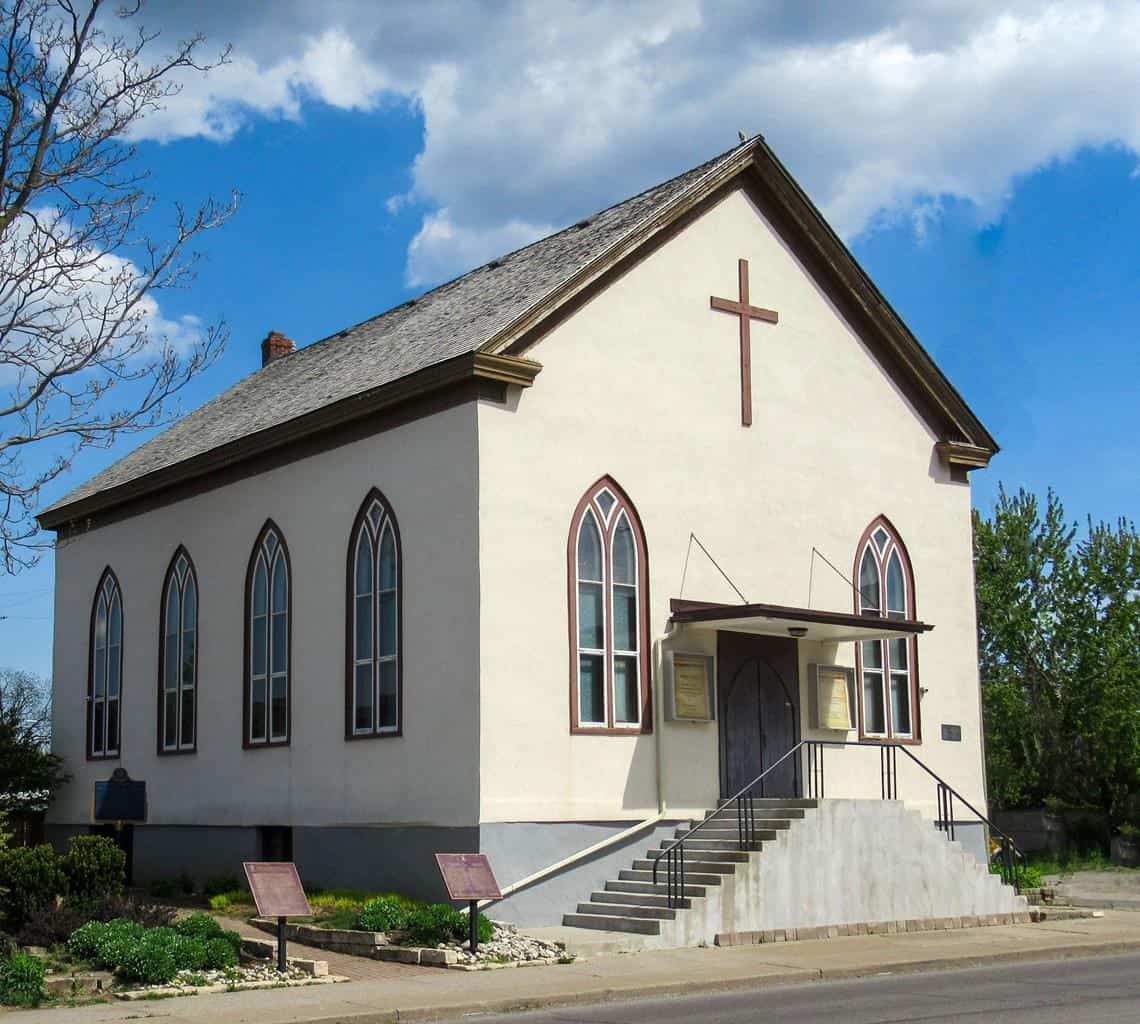St. Catharines church Harriet Tubman attended gets upgrades, to soon reopen for tours
Published February 24, 2023 at 6:43 am

Edward Roy Cassell Smith sometimes imagines his ancestors rejoicing in the balcony of the Salem Chapel, where freed slaves first came to worship nearly 170 years ago.
The small church in St. Catharines, Ont. – once the home congregation of abolitionist Harriet Tubman – has been a special place for Black Canadians for decades, says Smith, and renovations that are nearing completion mean it can soon share its history with others again.
“Black people celebrated here,” said Smith, a member of the church and a descendant of the freed slaves who prayed there. “It’s a really special feeling.”
The Salem Chapel British Methodist Episcopal Church sits near a busy downtown street in St. Catharines, not far from the border. It was built in 1855 by freedom seekers who escaped slavery by travelling the Underground Railroad, a network of clandestine routes with stops across the United States and Canada.
The building is now in the final stretch of renovations that had been delayed due to the pandemic. Next month, work on the floors, stairs and windows, among other upgrades, will be complete and regular tours can resume not long after that, said church historian Rochelle Bush.
“I would love for every Canadian to know about this chapel and the history of the Underground Railroad in Canada, which is often forgotten,” said Bush.
Tubman, who escaped slavery and later helped free dozens of other slaves, worshipped at the church when she lived in St. Catharines from 1851 to 1862.
The city and the church were significant locations for those who escaped slavery and arrived in the region, Bush said.
“In Canada, once you were out of the southern states, you were traveling by foot, by carriage, but most times by train. You would cross the suspension bridge (slightly north of Niagara Falls), and then you would get out at the depot in St. Catharines,” Bush said.
“From there, you would either just walk into town, or pay for a carriage to take you into town.”
Bush said one of her ancestors was the minister in charge of the Salem Chapel around the time Tubman was travelling to southern states, into dangerous territory, and bringing back freed men and women to St. Catharines.
The newcomers were considered free men and women in the north due to Canada’s Slavery Abolition Act, which came into effect on August 1834. U.S. president Abraham Lincoln established the Emancipation Proclamation about 30 years later.
Conductors on the Underground Railroad, like Tubman, would tell the refugees to head to the Salem Chapel, said Bush. Chapel community members would then help the newcomers settle in, provide clothing and food, and find work.
Tubman eventually brought her mother, father, three brothers and other loved ones to Canada, Bush said. The famous abolitionist’s descendants live in British Columbia, she said.
Abolitionist Frederick Douglass also made several stops at the Salem Church when it sat in the neighbourhood once known as the “Coloured Village,” Bush said.
The church, which can fit about 200 people, has recently faced several challenges.
In 2021, a statue of Tubman at the church broke after it was kicked to the ground. There were other cases of vandalism and hate crimes reported to police by the church including racial slurs spray-painted on the white walls outside the building.
That same year, the federal government approved a $100,000 grant for the church. With further help from private donors and a GoFundMe campaign, Bush said the church has been able to renovate deteriorating parts of its building. It also upgraded security with the installation of cameras and a fence.
As the building readies to open to the public once more, Smith and others connected to the church want to raise its profile while also raising further funds for future restoration projects.
“The church has always been there,” said Smith, a church volunteer who has vivid memories of his aunts in the chapel’s kitchen, “fussing over whatever it is that they’re making, setting up the tables and yelling at us kids to get out of there.”
“It’s where our important things happened in our family.”
As she contemplates the church’s history, Bush said she often sits in the building by herself, thinking about the people who have come through its doors over the decades.
“l’ll go in there at night, keep all the lights out, and try to visualize how it was back in the 1850s. There was no gas, no lights, no nothing,” she said.
“The only light that’s coming in through the windows is the moon. Just imagine.”
This report by The Canadian Press was first published Feb. 24, 2023.
Fakiha Baig, The Canadian Press









